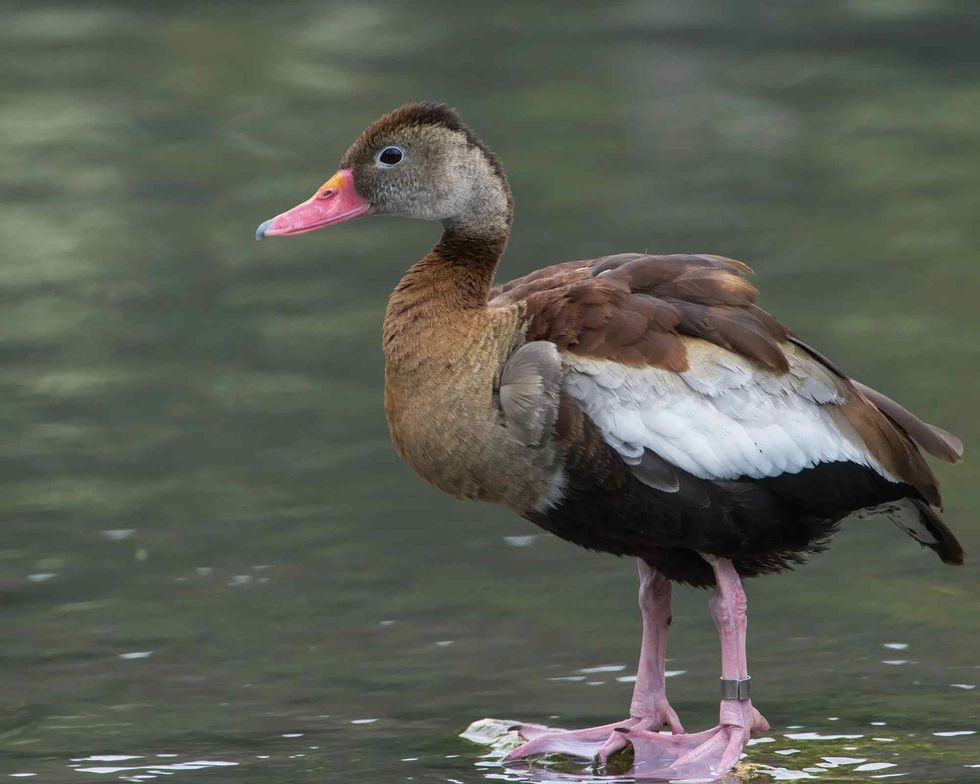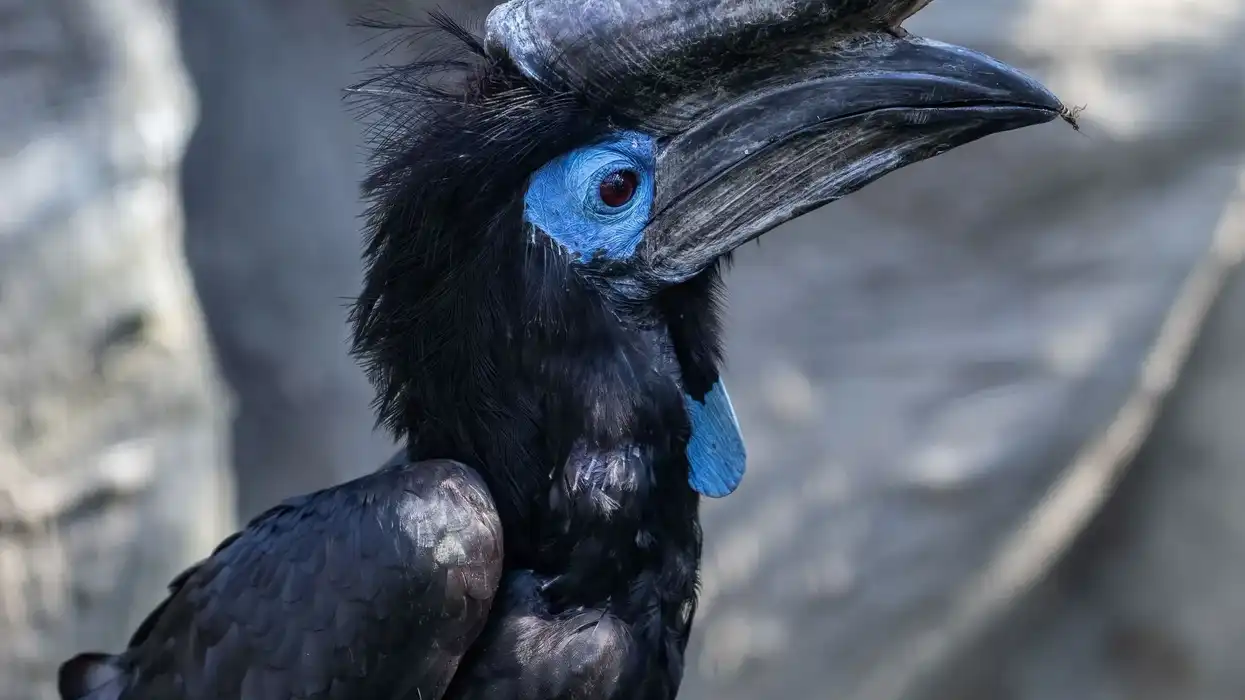The black-bellied whistling duck has extraordinary features that distinguish them from true ducks, one such aspect is that these ducks are frequently found nesting in tree cavities just like the Fulvous whistling ducks, hence these ducks are also identified as the black-bellied tree duck.
The black-bellied whistling duck (Dendrocygna autumnalis) is further categorized into two subspecies, the northern black-bellied whistling ducks and southern black-bellied whistling ducks, based on the regions in which they are found.
These ducks are nocturnal, can adapt themselves to any environment, and produce a unique whistling sound as their call.
Intrigued already? To know more about the black-bellied whistling duck keep on reading. If you like this article, please check our articles on Radjah shelducks and ducks for more information about these beautiful birds.
Black-Bellied Whistling Duck Interesting Facts
What type of animal is a black-bellied whistling duck?
This is an exuberant native North American bird that has a wide range of distribution that extends to the south-central regions of South America is a whistling duck species in this family of Anatidae of genus Dendrocygninae.
What class of animal does a black-bellied whistling duck belong to?
The Anatidae family incorporates more than 174 species of ducks, geese, and swans, in this family the Dendrocygninae autumnalis is an extraordinary species that belong to the class Aves. The species is further divided into two subspecies, northern black-bellied whistling ducks and southern black-bellied whistling ducks.
How many black-bellied whistling ducks are there in the world?
The black-bellied whistling duck belongs to the category of indigenous North American birds and these aquatic birds are located all year round, frequently in large flocks in the southeastern region of Texas and Florida and also in the regions of South America.
These ducks have a huge population but the number of black-bellied whistling ducks found all over the world is estimated at around 2,000,000 and increasing, especially in southeastern Texas.
Where does a black-bellied whistling duck live?
The black-bellied whistling ducks have a wide range, nevertheless, this species of aquatic birds are classified into two subspecies based on the location where they are found.
The ‘Dendrocygninae autumnalis fulgens’ or the North American black-bellied whistling ducks are discovered in the southern range of the U.S including Texas, Alabama, and Florida all year round, and in the south eastern regions of Arizona seasonally. These aquatic birds are infrequent in Tennessee, Arkansas, Georgia, and South Carolina but they are common in Florida.
The Dendrocygninae autumnalis autumnalis, or the southern black-bellied whistling ducks, are found in Panama and Paraguay.
What is a black-bellied whistling duck's habitat?
This species of aquatic bird is extremely sociable and adaptable, this whistling duck establishes their nest in the cavities of trees. The ducks prefer willow, oak, hackberry, and other trees for nesting, and even nest on the ground.
Their habitat may also incorporate shallow water and ponds where water lilies, cattails, and hyacinths are found in abundance, as they feed on this vegetation. It can be seen near agricultural properties and in nest boxes.
Who does the black-bellied whistling duck live with?
These North American birds are extremely social and can be spotted in large flocks which may consist of as many as a thousand birds.
These ducks are found in monogamous pairs which form during the winter season, both the male and female ducks involve themselves while choosing a nesting site that can be inside the cavity of a tree or on the ground.
How long does a black-bellied whistling duck live?
The average life span of this aquatic bird is nine years.
How do they reproduce?
Black-bellied whistling ducks are monogamous, the males and females are found living with each other for many years and their breeding phase commences from the first year. After breeding the female bird lays up to 18 eggs and the duration of the incubation is 25-30 days.
This aquatic bird initially does not build their nests, hence it searches for cavities in trees or nest boxes.
The black-bellied whistling duck frequently nests on the ground where dense grasses are available to lay their eggs in, both the parents play an active role in selecting a nest. The females often lay their eggs in the nests of other birds and this behavior is called ‘nest dumping’.
What is their conservation status?
The population of this bird is plentiful and it is found in huge flocks of more than thousands of birds in parts of Texas and Florida. In Texas and Florida, this sight is usual but they are infrequent in other parts of America. The conservation status is of the least concern according to IUCN.
Black Bellied Whistling Duck Fun Facts
What do black-bellied whistling ducks look like?

These whistling ducks have a wide range of distribution all over the southern territories of North America, especially in Texas where they can be spotted in the cavity of trees, nest boxes, shallow water, and ponds.
This duck is identified for its black belly and black tail, the bill of these ducks are red and often reddish pink. Their face, throat, and chin areas are white or grayish, while their crown area, breasts, lower neck, and mantle have an exotic chestnut hue.
Their wings are pale tan along with broad white strips and it has distinguished white eye-rings.
How cute are they?
The young ducks are incredibly cute and the adults are the mature version of the young ones and many people find them cute as well.
How do they communicate?
These ducks are extremely gregarious and gather in huge flocks, this duck makes a very obstreperous whistle, and this call can imply myriad things.
How big is a black-bellied whistling duck?
This is a medium-sized duck with a body length of 19-22 in (48.2-55.8 cm) hence the black-bellied whistling ducks are as big as Fulvous whistling ducks.
How fast can a black-bellied whistling duck fly?
The black-bellied whistling duck can fly slowly, but its accurate speed has not been recorded.
How much does a black-bellied whistling duck weigh?
The average weight of this duck is approximately 1.4-2.2 lb (0.6-1 kg).
What are the male and female names of the species?
Male ducks are known as drakes, while females are known as ducks, both the female and the male take part in actively searching for nests and nurturing their young.
What would you call a baby black-bellied whistling duck?
After breeding the female lays eggs often in the nests, nest box, or even on the ground, the babies are called ducklings. The ducklings can feed themselves right after they are born and they do not require external feeding by their parents.
What do they eat?
Black-bellied ducks are a part of the ecosystem and they feed on aquatic vegetation, grains, and seeds, but often they are seen feeding on small insects, mollusks, and spiders when it requires more protein intake, so their feeding pattern may vary according to their requirements.
Are they dangerous?
These ducks are relatively harmless and no such record of them being dangerous has been registered.
Would they make a good pet?
Ducks are frequently seen being raised as a pet, however, these ducks are social creatures who prefer living in flocks, hence it is not wise to keep them in captivity, it is better to leave them on their own in the wild.
Did you know...
Black-bellied whistling ducks are called 2quirrojo in Spanish and Dendrocygne à ventre noir in French.
The oldest black-bellied whistling duck that ever lived was in Louisiana and it lived for 10 years and seven months.
Are black-bellied whistling ducks native to Florida?
The black-bellied whistling ducks have a wide range of distribution, it is commonly located in parts of Texas and Florida, but whether it is native to this state or not is not specified.
Do black-bellied whistling ducks migrate?
These ducks were initially non-migratory and were observed in the shallow aquatic habitat, in trees, or on the ground. However, due to the extensive expansion of their breeding range, they are now known to migrate southward, into Mexico, during the winter.
Here at Kidadl, we have carefully created lots of interesting family-friendly animal facts for everyone to discover! Learn more about some other birds including kakapo facts and Fischer's lovebird facts.
You can even occupy yourself at home by coloring in one of our free printable black-bellied whistling duck coloring pages.










